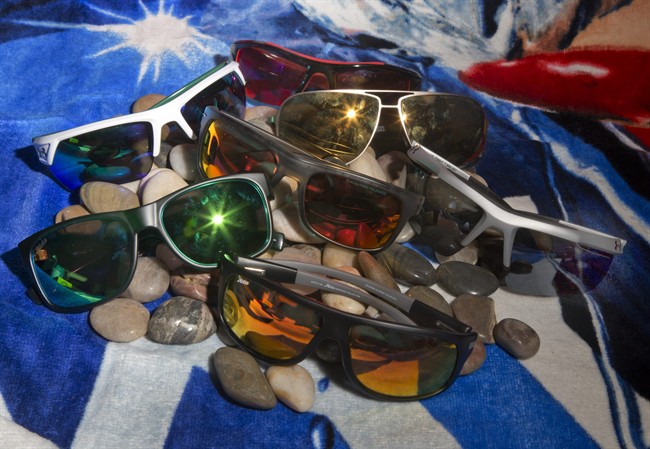How long do you keep your designer shades? Brazilian researchers say sunglasses should be replaced every two years to protect against ultraviolet rays hurting your eyesight.

As time goes on, sun exposure wears down the lenses increasing risk of exposure that can cause long-term damage to your eyes and vision, according to scientists out of the University of Sao Paolo.
“Sunglasses play an important role in providing safety, and their lenses should provide adequate UV filters,” the researchers, led by Dr. Liliane Ventura, wrote in their study.
“Ocular health is a serious concern worldwide, but particularly in tropical countries where UV indexes are extremely high in summer and still very high in winter compared to countries that are farther apart from the tropics. In most countries in the southern hemisphere, and specifically in Brazil…sunglasses standards are not quite appropriate for the ultraviolet conditions…the public should be more aware about ultraviolet protection as a whole,” the study reads.
READ MORE: Your car’s side windows aren’t protecting you from UV rays, study warns
For their research, Ventura and her team created an “aging test” to see how well sunglasses deal with the wear and tear to their UV protection. Keep in mind, sunglass-makers need to meet standards when it comes staving off the sun’s rays through the lenses.
Ventura guessed that in Brazil, people wear their sunglasses for about two hours a day and replace them every two years. They created calculations that would place the shades in front of a sun simulator lamp for about 134.6 hours at a five-centimetre distance – that would replicate how much sun Brazilian locals would be getting with their sunglasses on.
Ventura’s hope is that manufacturers and health officials will use her aging test to make sure sunglasses are up to par based on current requirements.
READ MORE: Here’s how much you’ll lower your skin cancer risk by applying sunscreen
She said that sun exposure varies based on world latitudes, too – tropical countries have higher UV indexes that are “extremely high” in the summer and remain high in the winter. In that case, sunglasses worn in the southern hemisphere should be replaced more often.
READ MORE: What you need to know about sunscreen and protecting your skin
Earlier this summer, scientists warned that your front windshield may be protecting you from the sun’s UVA rays as you drive but your side windows aren’t offering any coverage at all.
This is putting drivers at an increased risk of skin cancer and cataracts if they aren’t protecting themselves adequately.
There are three spectrums of light – ultraviolet A (long rays) is tied to aging the skin, ultraviolet B (short rays) can lead to burns and ultraviolet C isn’t as worrisome because most of the rays are absorbed by the ozone layer.
UVA can contribute to cataract formation, skin cancer and skin damage.
READ MORE: Is aerosol sunscreen safe for you? Inhaling chemicals is a concern
Lenses should offer UV filters that protect against developing corneas, swelling of the eye that can distort vision and even other concerns, such as the growth of pink, fleshy tissue on the whites of the eye that can tamper with vision, Ventura said.
Her full findings were published in the journal Biomedical Engineering Online. Read the full findings.
carmen.chai@globalnews.ca
Follow @Carmen_Chai


Comments